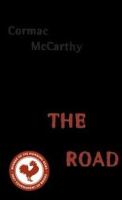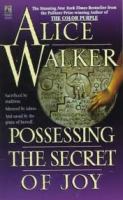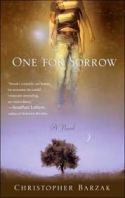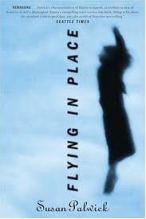I want to talk about a problem. Or maybe not a problem. A schism. A separation. These days people sometimes like to call it “a disconnect” but I don’t approve of turning verbs into nouns. It’s supposed to go the other way.
Anyhow. A disconnection.
Here’s the issue as I see it. On the one hand, the old teacher-wisdom (such as it is) about gender and books is that girls will read male protagonists but boys will not read female protagonists.
I’ve seen this as a teacher and I’ve seen this as a parent. My older boy has been raised by the strongest and most awesome mother you could imagine, but if JK Rowling had written a series about Hermione Granger, he would not have been interested. Even the younger one, five years old right now, shows so much less interest when a book is about a girl. He’ll listen to The Paper Bag Princess, but not with the same kind of delight that he listens to Mortimer.
So teachers do a kind of quiet, guilty disservice to the girls. We read boy books with the kids. And I don’t even mean just the old dinosaur books I’ve complained about before. I mean even the new stuff. I blogged a while back about some new books I thought were good to read with kids at the start of high school, and some others for when they’re older, but if you look at it from a gender point of view, my track record is not great. Look at my junior book recommendations in a table:
| Book | Author Gender | Protagonist Gender |
Tears of a Tiger by Sharon Draper |
F | M |
Little Brother by Cory Doctorow |
M | M |
Can’t Get There From Here by Todd Strasser |
M | F |
Zack by William Bell |
M | M |
Iqbal by Francesco D’Adamo |
M | M |
Two points out of ten. That’s it. How about the senior recommendations:
| Book | Author Gender | Protagonist Gender |
| The Kite Runner by Khaled Hosseini | M | M |
| The Road by Cormac McArthy | M | M |
| Possessing the Secret of Joy by Alice Walker | F | F |
| One for Sorrow by Christopher Barzak | M | M |
| Flying in Place by Susan Palwick | F | F |
Should I congratulate myself here that I’ve got four out of ten? Probably not, because I have to admit that the two books by women in this table are, despite being luminously good reads, are the hardest to sell to the boys. And I’m talking about some smart, sensitive, intelligent teenagers here — don’t think of them as hulking Neanderthals.
I could try to find an out for myself. I could give myself points for the gender of the deuteragonists as well, the narrative sidekicks. How would that look:
| Book | Author Gender | Protagonist Gender | Deuteragonist Gender |
| Tears of a Tiger by Sharon Draper | F | M | F |
| Little Brother by Cory Doctorow | M | M | F |
| Can’t Get There From Here by Todd Strasser | M | F | F |
| Zack by William Bell | M | M | F |
| Iqbal by Francesco D’Adamo | M | M | F |
| The Kite Runner by Khaled Hosseini | M | M | M |
| The Road by Cormac McArthy | M | M | M |
| Possessing the Secret of Joy by Alice Walker | F | F | M |
| One for Sorrow by Christopher Barzak | M | M | M |
| Flying in Place by Susan Palwick | F | F | F |
That still only gets me twelve out of a possible thirty points. Closer to half, but let’s face it: I had to cheat to get there. We already know that the girls get in if they’ll agree to play the lesser roles: sidekick, girlfriend, emotional support, object of desire.
But what should I do with all of this? I’ve been teaching for quite a few years now, and I’m still finding myself catering to the boys because the girls will go along with it.
I said there was a schism here, and I haven’t even arrived at what it is yet. Because teachers are going one way and publishers are going the exact opposite. Here’s the current crop of New York Times bestsellers for young adults in a similar analysis:
| Book | Author Gender | Protagonist Gender |
| The Perks of Being a Wallflower by Steven Chbosky | M | M |
| The Fault in Our Stars by John Green | M | F |
| Divergent by Veronica Roth | F | F |
| Insurgent by Veronica Roth | F | F |
| Looking for Alaska by John Green | M | M |
| Prodigy by Marie Lu | F | F |
| Scarlet by Marissa Meyer | F | F |
| The Book Thief by Marcus Zusak | M | F |
| Thirteen Reasons Why by Jay Asher | M | F |
| Legend by Marie Lu | F | F |
Now the Fs have it. There’s a lot of interesting stuff to be learned from this list. Male authors seem to be adapting to the change in the reading world by writing female protagonists (or, rather, from a Darwinian point of view, the male authors who are best suited to this new world are the ones who are thriving). Of the four men on that list, three have female protagonists.
But the schism that I wanted to talk about is this: the two biggest forces in our society that want people to read (teachers and publishers) are going in the opposite directions. Teachers are turning towards the boys because the girls will often shrug their shoulders and go along; publishers are shrugging their shoulders at the boys and turning towards the girls.
None of this is a complaint. In both cases, people are using experience to guide what works. My experience as a teacher tells me that the increased empathy we see (on the whole; please don’t be angry at me for saying it) in teenage girls will lead to their being able to read a male protagonist comfortably. And publishers? They want to make money. Is that so bad? Girls are buying books, so they publish books aimed at girls.
I do think there’s a problem here, however. We’re still having troubles getting boys to read. I can turn an open-minded boy onto reading with Cormac McCarthy, Cory Doctorow or Christopher Barzak — but if that boy goes into a bookstore and sees what he thinks of as all girl books on the displays, he might not stick around.
I don’t have much of a solution — other than librarians, bookstore clerks and maybe goodreads.com. Librarians are often my solution. The good school librarians and public librarians are always ready to listen to what someone last enjoyed and figure out what they’d like next. Bookstore clerks, same thing. And if we can get beginning readers onto Goodreads, and get them invested in the social networking aspect, everybody wins.
But, and I know I’ve made this point before: the solution is definitely not the same old same old. Whether the narrators are male or female, students are most turned on by what feels fresh and new. If I have Batman mission in my teaching career, it’s to get Lord of the Flies out of the bookrooms of the English departments of the world. Listen up, fellow teachers: no kid finishes that book and says, “Oooh, where can I find another William Golding novel.”






 Some links to buy Backward Glass
Some links to buy Backward Glass
January 27th, 2014 at 1:20 pm
[…] David Lomax, a teacher, writes […]